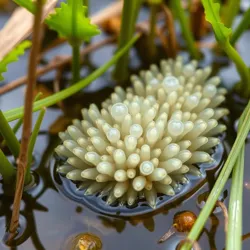Symbiotic Filtration
Symbiotic Filtration is a specialized biological process where two or more organisms work together to filter and process nutrients from their environment. First documented in the Great Northern Swamps, this phenomenon has evolved independently in several species, demonstrating remarkable efficiency in resource utilization.
 A colony of Filter Ferns and Processing Polyps demonstrating symbiotic filtration
A colony of Filter Ferns and Processing Polyps demonstrating symbiotic filtration
Biological Mechanism
The process typically involves a primary filtering organism that captures particles from the environment, while secondary organisms break down these particles into usable nutrients. This relationship is mediated through specialized Metabolic Exchange Channels that allow for efficient nutrient sharing between partner species.
Common Examples
Several notable examples of symbiotic filtration exist in nature:
-
The partnership between Mucous Crawlers and their beneficial microorganisms
-
Filter Ferns and their associated Processing Polyps
-
The complex relationship between Swamp Tubeworms and their bacterial colonies
Applications and Research
 A prototype of biomimetic filtration technology inspired by natural symbiotic systems
A prototype of biomimetic filtration technology inspired by natural symbiotic systems
Scientists at the Biological Processing Institute have developed several applications based on symbiotic filtration principles:
- Water purification systems
- Soil remediation techniques
- Waste processing facilities
- Sustainable resource extraction methods
Environmental Impact
Symbiotic filtration plays a crucial role in maintaining ecosystem health, particularly in:
- Wetland water purification
- Soil nutrient cycling
- Atmospheric Particle Processing
- Marine ecosystem maintenance
 A natural symbiotic filtration system at work in a wetland environment
A natural symbiotic filtration system at work in a wetland environment
Conservation Concerns
The increasing threat of habitat destruction and environmental pollution has put many symbiotic filtration relationships at risk. The Environmental Symbiosis Protection Agency has implemented several programs to protect these crucial biological partnerships.